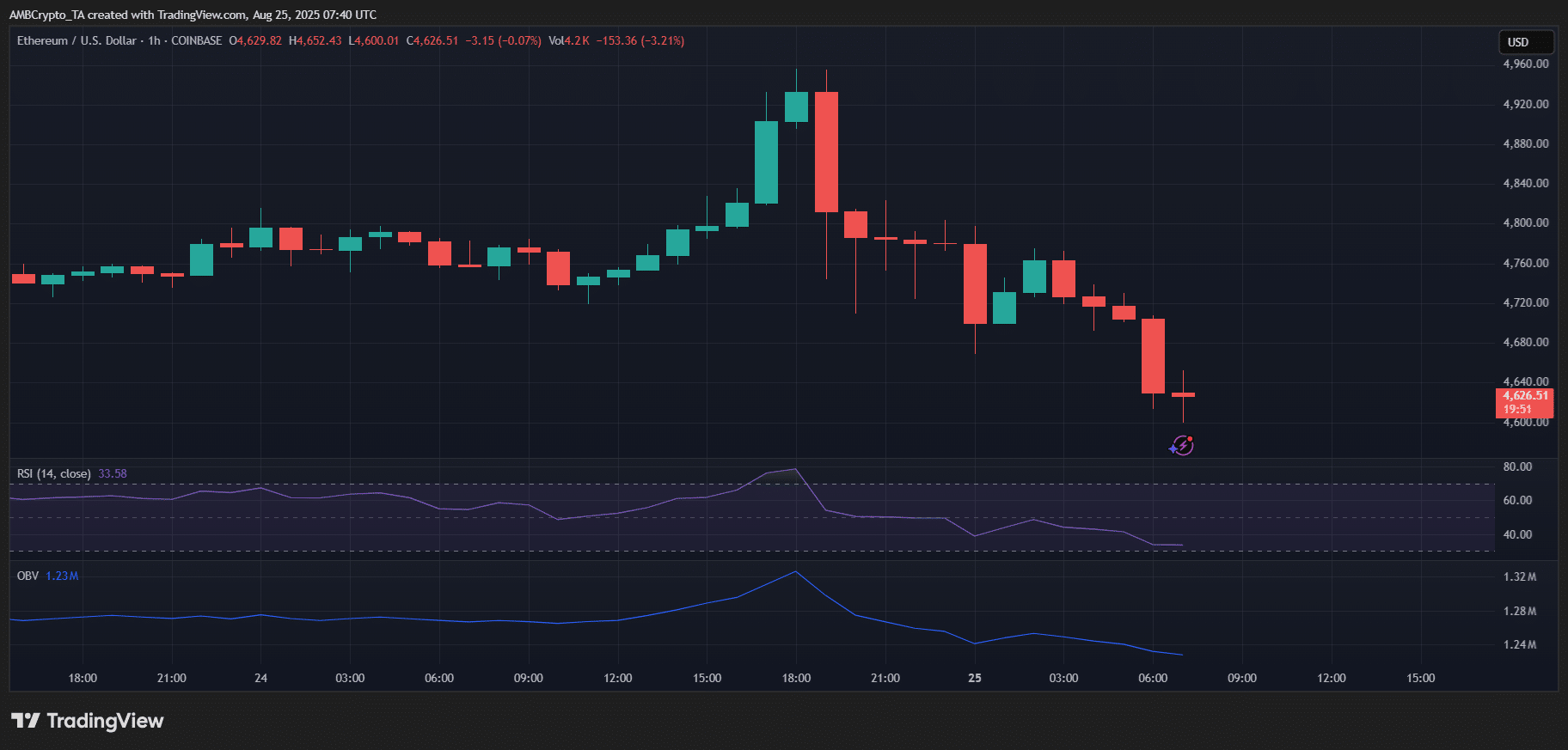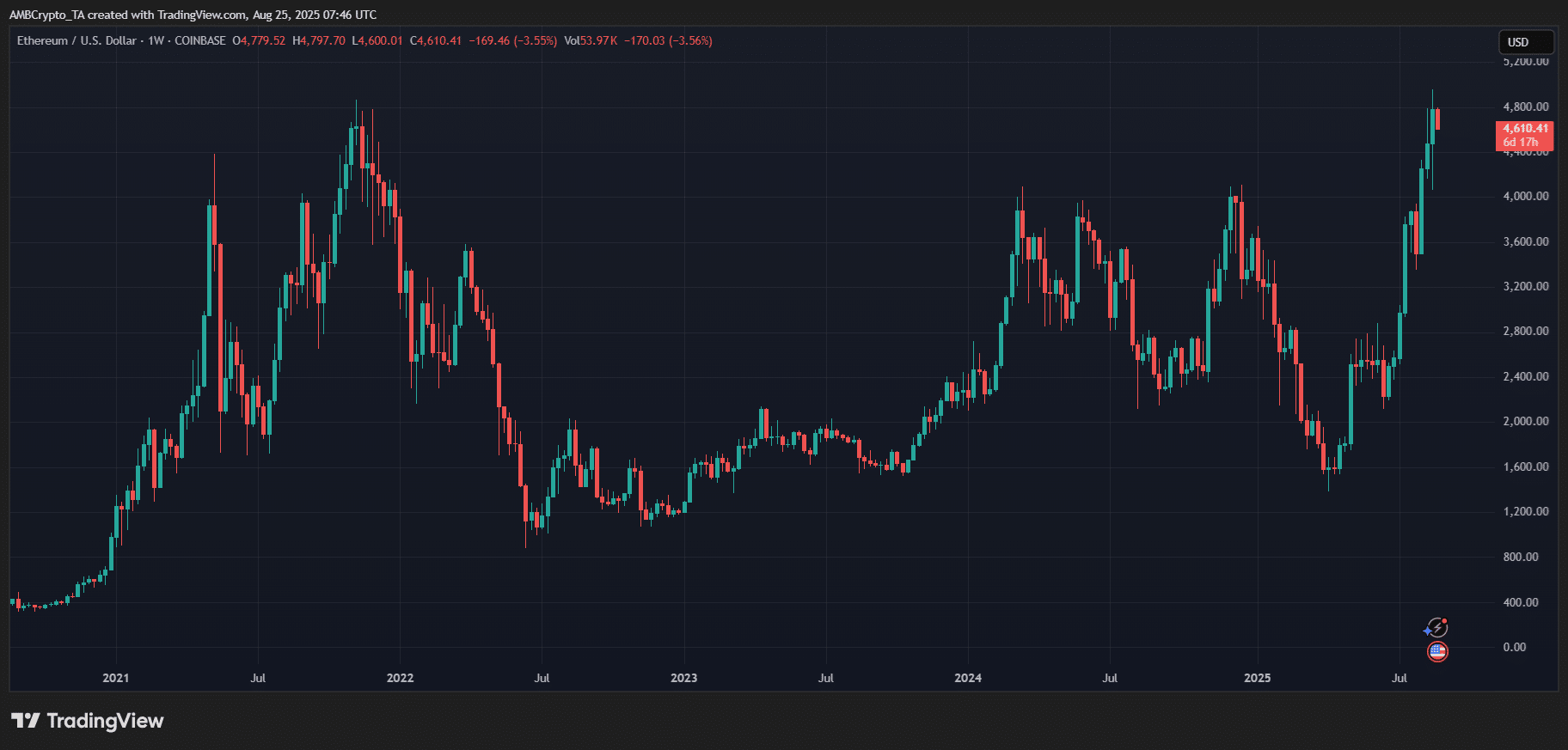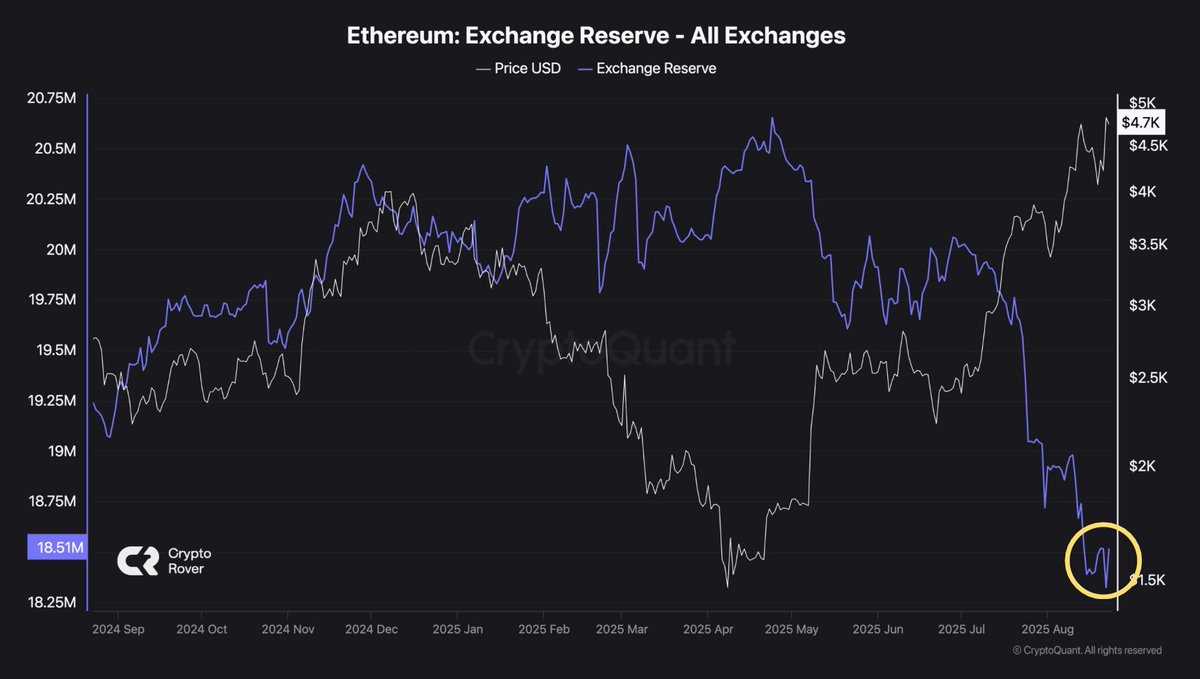Ethereum price surged to a new ATH above $4,900 driven by falling exchange reserves and strong on-chain demand; this supply-tightening, combined with price discovery momentum, may fuel further upside while short-term volatility and pullbacks remain possible.
-
ETH topped $4,953 then retraced to ~$4,626 — a fresh all-time high followed by a normal pullback.
-
Exchange reserves for ETH are down, raising the prospect of a near-term “supply shock” if demand rises.
-
On-chain indicators: hourly RSI ~33 (oversold) and OBV weakening to ~1.23M, indicating short-term volatility amid a bullish longer-term trend.
Ethereum price jumped past $4,900 to a new ATH; read the latest on supply dynamics, analyst views, and what traders should watch next — full update and actionable takeaways.
What is driving Ethereum’s record price surge?
Ethereum price rallied to a new all-time high as fewer coins on exchanges and renewed institutional and retail demand pushed ETH into price discovery. On-chain supply metrics and relative strength versus Bitcoin are the primary drivers, while short-term liquidity and weekend flows create volatile moves.
How did ETH reach an ATH and what followed?
ETH climbed to an intraday peak of $4,953 before easing to around $4,626 at press time. The move into price discovery followed a breakout above the 2021 peak on the five-year ETH-USD chart, but a sharp sell-off produced a retracement typical after rapid rallies.

Source: TradingView
Why does on-chain supply matter for ETH price?
Falling exchange reserves reduce available liquid supply. With fewer ETH listed on centralized platforms, even moderate demand can push prices higher as buyers compete for a thinner pool of sell-side liquidity. Market observers describe this condition as a potential “supply shock.”
What do technical indicators say right now?
Hourly RSI slipped to ~33, signaling oversold short-term conditions after the retracement. OBV softened to ~1.23 million, showing weaker immediate buying pressure. These indicators support the idea of short-term volatility within a longer-term bullish structure.

Source: TradingView
When might traders expect a retest or continuation?
Short-term chop is likely; experts note that weekend liquidity can amplify moves and lead to corrections. A healthy scenario would be a retest of the breakout zone that holds as support, confirming the next leg up. Failure to hold that zone could signal deeper consolidation.
What are analysts saying?
Analyst Miles Deutscher summarized the setup as “BTC is exhausted, ETH isn’t,” highlighting relative strength. Other market watchers caution that thin liquidity can exaggerate candles, urging traders to watch retest levels and exchange reserve trends. Crypto Rover and Michaël van de Poppe are among the commentators cited for supply and liquidity perspectives (mentioned as plain text sources).

Comparison: ETH ATH vs BTC recent levels
| Metric | ETH (latest) | BTC (latest) |
|---|---|---|
| Recent peak | $4,953 | Relatively stalled near resistance |
| Retracement | ~7% to $4,626 | Variable, less follow-through |
| Exchange reserves | Declining | Mixed |
Frequently Asked Questions
How high did Ethereum trade during the latest move?
Ethereum traded up to $4,953 intraday before a pullback to around $4,626; that marked a new all-time high followed by a typical retracement after rapid upside.
Is the ETH rally supported by fundamentals?
Yes. Falling exchange reserves and continued on-chain demand underpin the rally. These fundamentals create conditions for sharper moves if buying interest increases.
Key Takeaways
- New ATH: ETH reached $4,953 then retraced to ~$4,626, entering price discovery.
- Supply dynamics: Declining exchange reserves raise the likelihood of a supply-driven spike.
- Trade plan: Watch retest levels, RSI/OBV, and liquidity flows before committing to new positions.
Conclusion
Ethereum price has entered a new phase of price discovery backed by on-chain supply dynamics and strong relative momentum versus Bitcoin. Short-term volatility is expected, but a successful retest of breakout zones would strengthen the bullish case. Monitor exchange reserves and technical support for next actionable signals.
